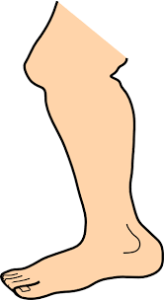 There seems to be a tendency amongst newer kenshi to lift the right foot too high when making fumikomi. This results in a seesaw motion and makes it difficult to equalise the balance between the feet and to bring the back foot up quickly in hikitsuke, ready for the next move.
There seems to be a tendency amongst newer kenshi to lift the right foot too high when making fumikomi. This results in a seesaw motion and makes it difficult to equalise the balance between the feet and to bring the back foot up quickly in hikitsuke, ready for the next move.
There are lots of exercises designed to fix this fault, ranging from traditional footwork patterns up and down the dojo to lunges, with or without suburi. Some teachers use the idea of standing behind a line or court marking and throwing the right foot forwards as far as possible without moving the left. In this way they encourage the flexion of the right knee. As I mentioned before, there is currently a very strong focus being applied to the practise of kihon using suriashi, (sliding footwork).
Everyone aspires to make a nice sharp slapping sound as the front foot hits the dojo floor and I suppose that there is certain logic in “the higher the drop, the louder the slap”. Only too often though, the end product is a sickening crunch as the heel hits the floor. In my view, the answer is to keep the foot close to the ground and strike the floor at a low angle. Pilots correct me if I have got it wrong, but it is a bit like bringing the pointy end down first.
If you bring your foot down at a shallow enough angle, you make maximum contact with the ball of your foot expelling the air between foot and floor and you then get a nice slapping sound. Remember to immediately bring your left foot up and you are ready to do it again.
A good way to set yourself up to make correct fumikomi is to first ensure that you start with your feet in the correct position and keep tension in the back of your left knee, at the same time have a slight bend in your right knee so that you are in a position to skim the floor with your foot. Immediately bring the left foot up so you are ready for the next step. Once you can do this, your hands and body come into play so that you can achieve ki-ken-tai-itchi and it’s job done.
On a slightly different tack, I had a bout of paranoia this week about the state of my kendo feet. I was offered and gratefully accepted a reflexology foot massage as part of some other medical treatment. I felt it was immediately necessary to explain away my kendo hooves to the charming lady doing the foot rub. To her credit she did not bat an eyelid and told me that as a keen dancer hers were pretty rough too.












